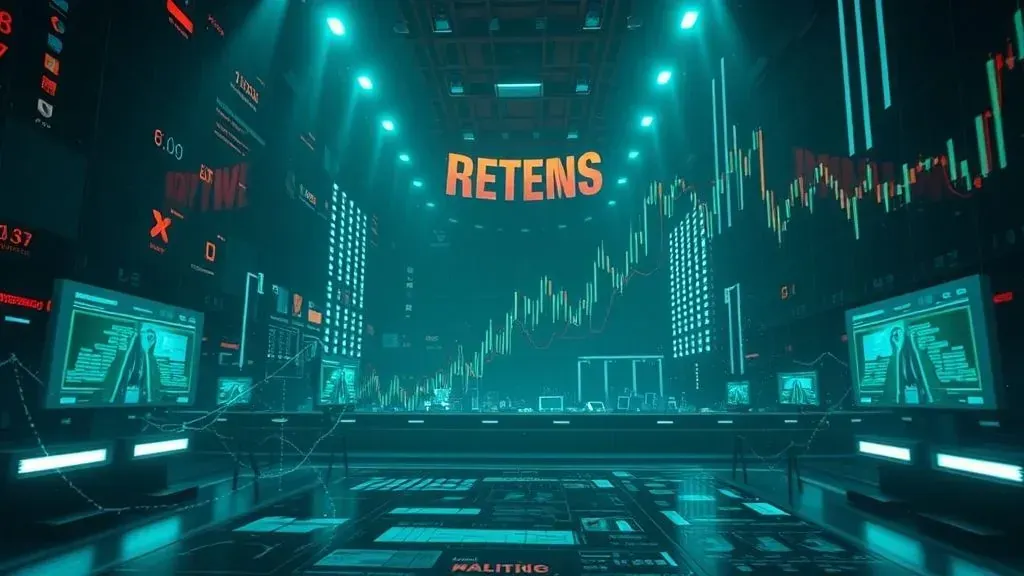
Decentralized perpetual contracts reached over $1.14 trillion in trading volume during September 2025, marking the first time monthly figures crossed the $1 trillion threshold. This achievement reflects a 48% increase from August's levels, according to DeFiLlama data. Projections for October suggest volumes could hit $1.3 trillion, driven by heightened activity.
Understanding On-Chain Crypto Perps
On-chain perpetuals, or perps, allow traders to speculate on crypto prices without expiration dates using smart contracts on blockchain networks. These instruments operate in DeFi environments, contrasting with CeFi platforms like Binance that rely on centralized infrastructure.
Traders benefit from high , often up to 40x on platforms like Hyperliquid, enabling amplified positions with minimal capital. This mechanism supports continuous trading in volatile markets.
Differences Between DeFi and CeFi Perps
DeFi perps provide transparency through on-chain data, reducing counterparty risks inherent in CeFi systems. However, CeFi offers faster execution and regulatory oversight in some jurisdictions.
Adoption shifts toward DeFi as technology improves user interfaces and liquidity, narrowing the gap with established CeFi markets.
Platforms Leading the Volume Surge
Hyperliquid dominated with $280.74 billion in September volume on its custom Layer 1 blockchain, emphasizing scalability. Its transparent model reveals large positions, such as a $300 million short.
Aster, built on BNB Chain, captured $493.61 billion, overtaking competitors through innovative features and backing from YZi Labs. The platform plans a zero-knowledge-based Layer 1 chain to enhance performance.
Lighter, an ethereum Layer 2 solution, recorded $165.4 billion with options up to 1001x, attracting users post its public mainnet launch.
Drivers of Adoption and Funding Trends
Increased web3 integration fuels perp adoption, as platforms enable seamless trading within decentralized ecosystems. Funding rounds, like Hyperliquid Strategies' $1 billion SPAC filing, aim to expand operations and acquire native tokens.
dynamics show institutional interest, with perps comprising 68% of trading volume in 2025, up from prior years per Kaiko reports. This trend supports broader crypto funding inflows.
Technology advancements, such as improved oracles and execution speeds, bolster reliability in DeFi perps, encouraging migration from CeFi.
Security Concerns in High-Volume trading
High leverage amplifies risks, including oracle manipulation and sudden liquidations that cascade through markets. Protocols often retain emergency powers, raising decentralization questions.
Security audits become crucial as volumes grow, with platforms like Hyperliquid facing scrutiny over transparency benefits versus privacy drawbacks.
Regulatory Implications Amid Growth
Regulation lags behind innovation, but milestones like $1T volumes may prompt oversight from bodies like the CFTC. Compliant data feeds, as seen in Kalshi-RedStone partnerships, aim to bridge on-chain activities with regulated standards.
Analysts warn of systemic risks from leveraged positions, potentially inviting stricter rules on security and consumer protection.
According to Infinex founder Kain Warwick, Hyperliquid pioneered scaling decentralized perps to mainstream levels. Binance CEO Changpeng Zhao noted that full transparency might deter large traders who prefer anonymity.
Broader Ecosystem Impacts
This volume surge influences NFTs and metaverse sectors by enabling derivative trading on related assets, fostering web3 innovation. DeFi protocols integrate perps to enhance liquidity in virtual economies.
market analysts observe muted altcoin seasons due to capital extraction via perps, shifting focus from holding to leveraged speculation.
Uncategorized trends show perps bridging traditional finance with crypto, promoting overall adoption.
The $1T milestone underscores perps' role in maturing crypto markets, offering educational insights for traders on risk management. It highlights the need for balanced approaches to leverage in evolving regulatory landscapes.



